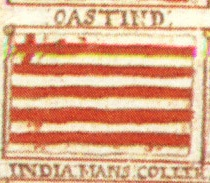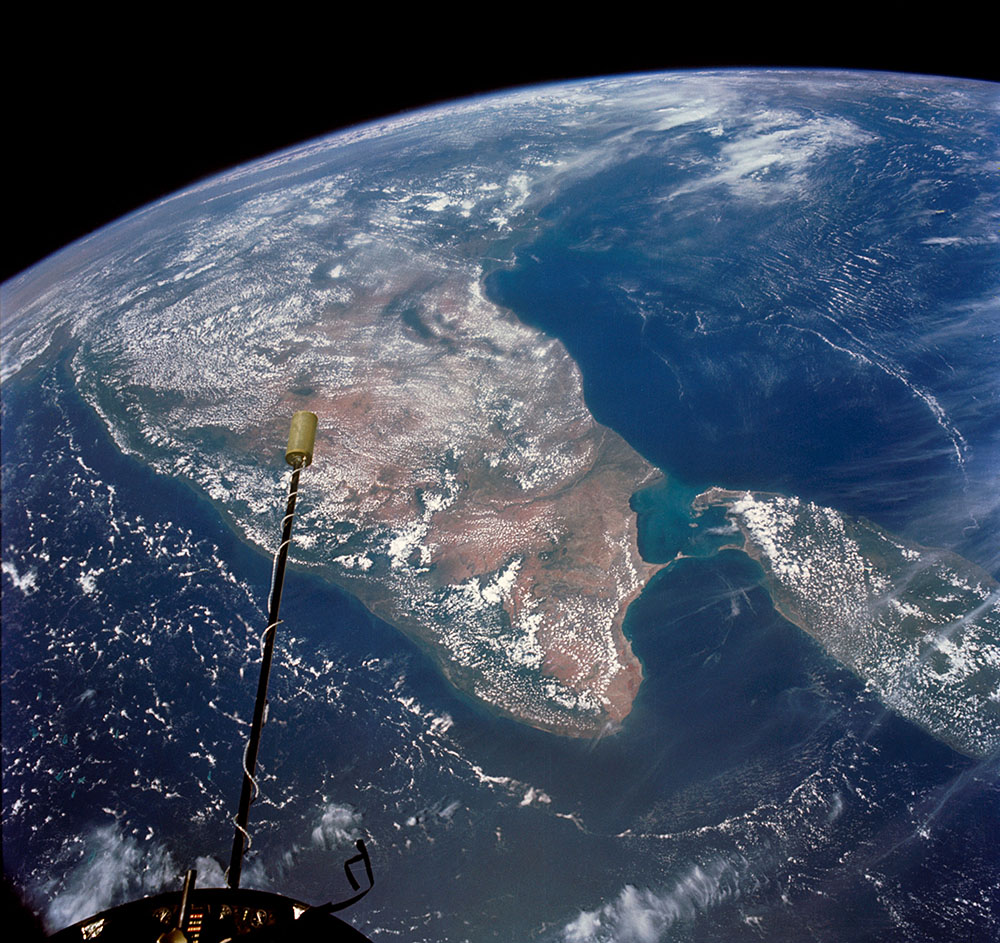East India Company's Early Ships in India (Part I)
Early flag used by East India Company ships in 17th century.
ImageSource:https://en.wikipedia.org/wiki/Flag_of_the_East_India_Company#/media/File:British_East_India_Company_Flag_from_Downman.jpg
Sea trade has always been more profitable than land trade. Land trade offers speed, so it can be more useful if the commodity being moved is perishable or if the value of the product is very high relative to its mass and size. Chinggis Khan used horses and feet to move his armies because the places he went to were contiguous, these horses also fought as part of the cavalry. The sea route would have been too long and his men would have been seasick and he used high speed horse couriers to relay messages and threats. Chinggis Khan often failed at sea. But he was no trader. His empire despite being massive was not bound by the logic of economics and trade between nations but military power and some diplomacy. Hence it was short lived and quickly fragmented.
Sea trade offers benefit of cost and is always more efficient when moving high volume heavy cargo. In 1600 when the East India Company received a charter and monopoly to trade beyond the Cape of Good Hope and till the Straits of Magellan(Cape Horn), there were other players in the region too. Many local vessels plied their trade in the Indian Ocean, which lay east of Cape of Good Hope. The Portuguese and the Dutch were also trading with India and had their ships in these waters.
Security of their trade and their desire to protect their turf meant these ships often faced off against each other. The British often ended up engaging in naval warfare against Indian rulers.
Between 1600 and 1614, every voyage was like an independent venture. People invested in each of the 14 voyages and the profits were shared as dividends after every voyage. Only after 1614 the EIC started functioning like a company with permanent stocks and the annual.
By late 17th century most ships of East India Company(EIC) were not owned by the EIC. These were often built on the banks of the river Thames on the orders of a group of traders who would own the ship collectively. The EIC would take these ships on rent. The term used was chartered ship, similar to todays chartered planes.
The EIC hired these ships and sent them on voyages to the east under its flag. These were slow moving merchant ships i.e. slower than warships as are the merchant vessels of today slower than modern destroyers and frigates. The EIC merchant vessel thus needed to have men with arms on board to protect the precious cargo and against other vessels that they might encounter on their long journey.
The larger the vessel, longer would be its voyages and more cargo it would carry. Thus, more likely it would be attacked and the frequency of attack would be higher. Thus, larger vessels were often better armed. These were all built in the same shipyards of UK that built vessels for the Royal Navy.
The Charter Act of 1813 took away the trade monopoly of EIC except for tea and trade with China. By 1830s there many other British traders in Indian waters. The Charter Act of 1833 brought in a more centralised government in India with the formation of a new position of Governor general of India. The Company would soon be more and more of an administrative body rather than a commercial body.
By 1830s with falling trade volume and focus on more expensive trade and trade with China and other East Asian(Far East) shores, the EIC started opting for smaller faster vessels, the Blackwall Frigates. But make no mistakes these were no naval frigates of the Royal Navy. The shipyards on the Thames river and other parts of UK were often employed by the Admiralty (the Admiralty of the state of UK). The Admiralty was formed and had succeeded the sea services of Scotland and England when they were united in 1707 as Great Britain. The shipyards on Thames that served the Admiralty had grown a lot owing to the Anglo-Dutch Wars. Now the shipyards that made frigates and other ships for the Admiralty made these merchant ships(Blackwall Frigates) that had a few similarities to some of the frigates of the Royal Navy such as three masts, single stern gallery. Note that the East Indiaman being larger had double stern gallery. The Blackwall Frigates were much faster than their predecessors much like the frigates of the Royal Navy were faster than the warships of their previous generation. All these factors contributed to the word "Frigate" being added to the name of this newer, smaller, faster merchant vessel. The earliest of these were made at the Blackwall shipyards but a vast majority were later built in Burma(then part of British India). After the Second Anglo Burmese War the EIC got access to more teak, oil and other material. But before that they already had the port city of Moulmein(Mawlamyine) on the Gulf of Martaban in lower Burma after the First Anglo Burmese War that took place from 1824 to 1826. This gave them access to timber and rubber which only increased after the second Burma War.
Moulmein's shipyards produced many of the Blackwall Frigates despite being over 6000 miles apart from Blackwall on Thames.
Moulmein(Mawlamyine) in 1870s ImageSource: https://upload.wikimedia.org/wikipedia/commons/8/8c/Moulmeinfromgreatpagoda.JPG




Comments
Post a Comment